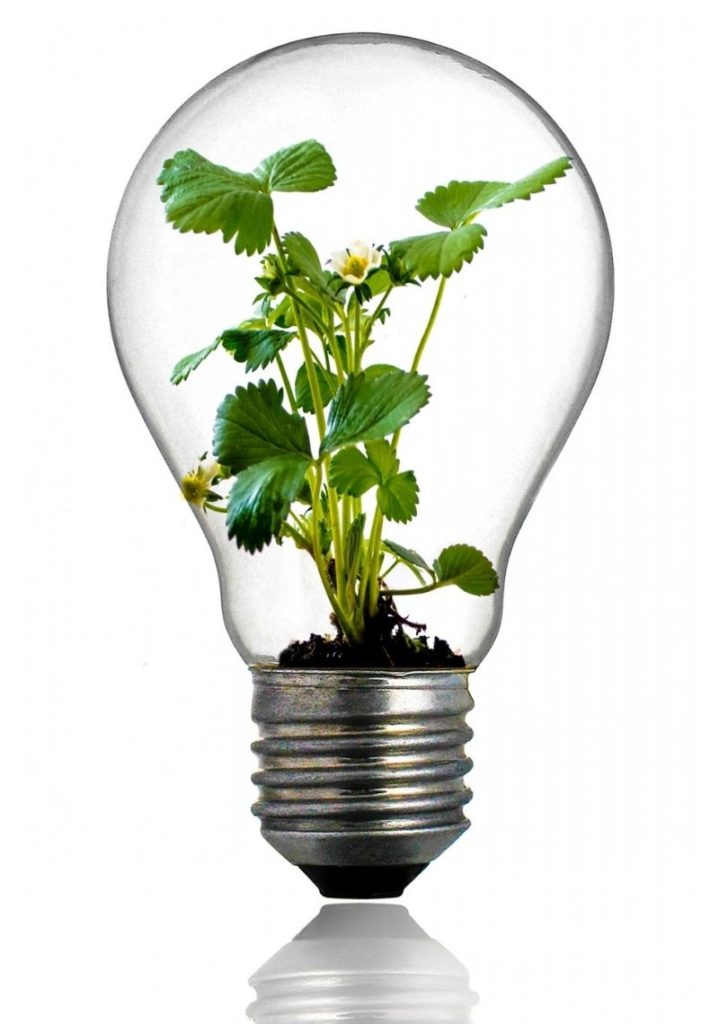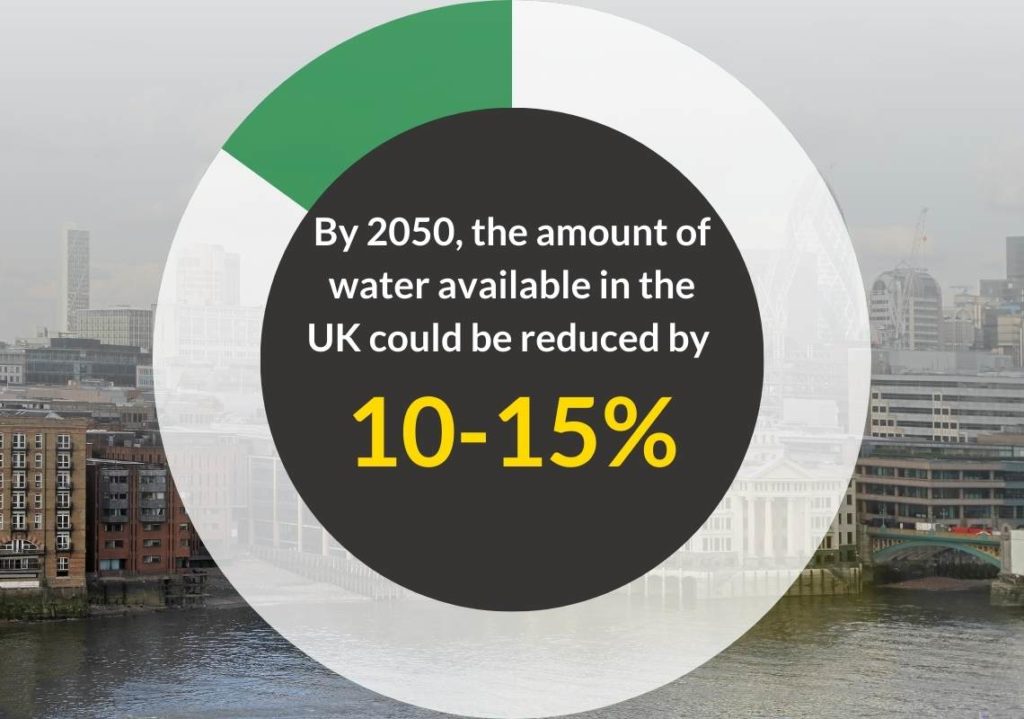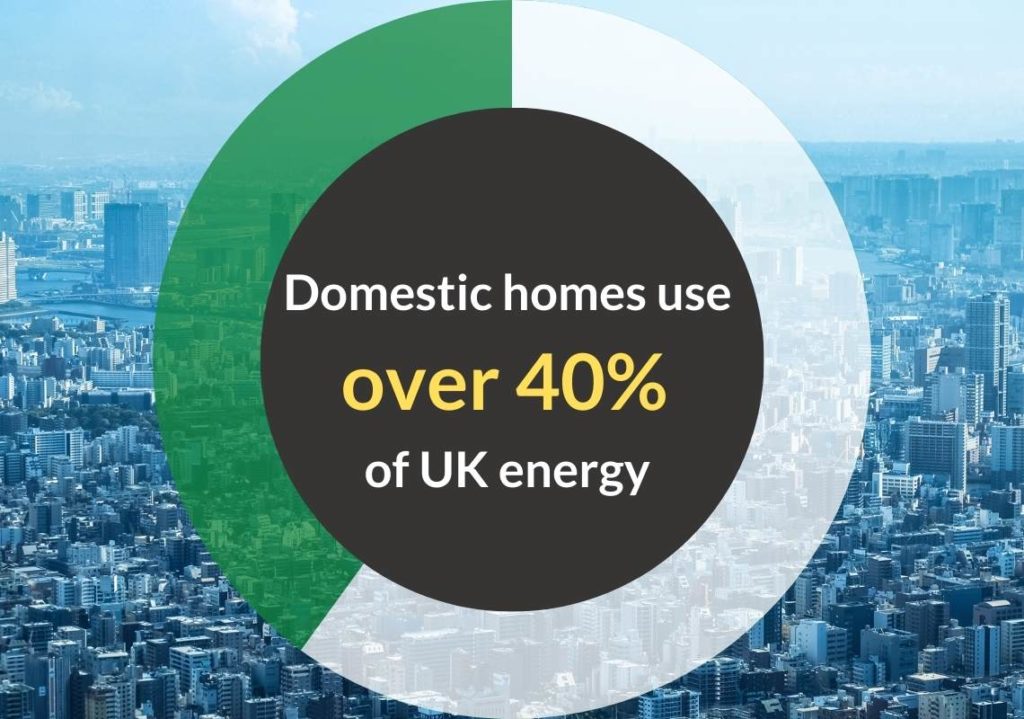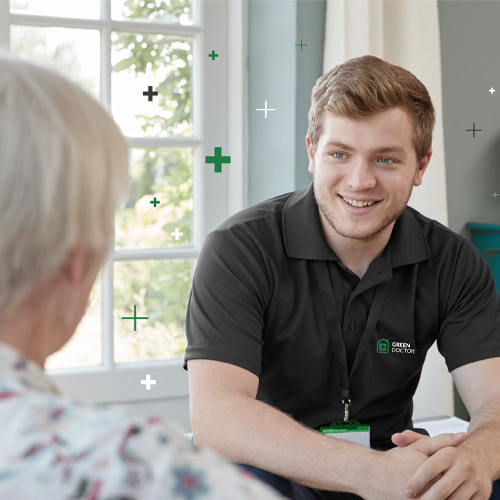Domestic homes use over 40% of UK energy and are responsible for 25% of the country’s CO2 emissions, contributing significantly to global warming. Water use contributes around 6% of the UK’s carbon emissions.
Energy
Carbon dioxide, as well as methane, soot, and other pollutants that we release into the atmosphere act like a blanket, trapping the sun´s heat and causing the planet to warm. Current projections forecast a global temperature increase of 2ºC, which will make the world a profoundly different place. Global warming or climate change lead to more frequent and severe weather and natural disasters including storms, heat waves, floods, and droughts. Heat related deaths will increase due to rising temperatures, air pollution will worsen, sea levels will rise and wildlife extinction rates will intensify.
Water
Despite being surrounded by water and seeing plenty of it fall from our skies parts of the UK, like London and the South East are classed as seriously water stressed. Projections show that climate change and increasing populations could see water demand begin to outstrip supply within the next 20 years. On the most recent warm bank holiday Thames Water supplied a staggering 758 million litres, equivalent to 300 Olympic swimming pools, to its customers. London is ranked as the 15th most water stressed global city. In 2019 Cape Town was literally within days of running out of drinking water, making many think water shortages are even more pressing than climate change, and the impact of water stress is one of the biggest risks to food production, economies, human health and social unrest.




Your challenges
Your challenge is broken down into two sections – one for energy and one for water. Feel free to choose one, or both!
As most of us will use fossil fuels to power, heat and maybe even cool our home we all have a carbon footprint. By undertaking simple actions we can significantly reduce our energy use, save precious resources and save money on gas and electricity bills.
The same is true of water – with some small changes to how we use water we can make a big difference to our daily consumption. Reducing hot water use has the double benefit of saving water and the energy used to heat it in the first place. Taking some of the learning from this challenge will absolutely reduce your energy and water use, make you feel good about reducing your carbon footprint and reduce your utility bills.
ENERGY
1. Switch off
Over the course of the week we want you to train yourself
to turn your lights off when you’re not using them. If you
switch a light off for just a few seconds, you will save more
energy than it takes for the light to start up again, regardless of the type of light. Just turning off unused lights will save you around £15 from your annual energy bill. If you falter perhaps put a £1 coin in a jar as a fine, or get down and do 5 press-ups!

2. Lightbulb audit
We’d also like you to carry out a lightbulb audit in your home and check where you still might have a halogen or incandescent bulb, thereby spotting an opportunity for an LED replacement. A full house with LED light bulbs could save you £35 off your annual electricity bill, LED bulbs are 80-90% more energy efficient than incandescent or halogen bulbs and produce the same amount of light. The savings of using LEDs, even factoring in the higher purchase price, can be significant. Ten 14W LED bulbs will cost you approximately £21.00 a year on your electricity bill. The same number of 77W halogen bulbs will cost you £115.50 a year. The best part is that a good LED bulb should last between 15,000 and 25,000 hours so is well worth the investment.
3. Draught-proofing
If you’re looking for more energy savings and have never gotten round to fixing some of those annoying draughts, then buying and fixing draught proofing is a DIY doddle. Draught-proofing around windows and doors could save you around £20 per year. You can buy draught-proofing tape from hardware stores or online, and here’s a link to watch a really good ‘how to’ draught proof film from the Energy Saving Trust (who incidentally have helped to provide most of the information on possible energy savings).
4. Energy free hour
If you’re hungry for more get the family / household to attempt the Energy Free Hour challenge! Our lives are controlled by TVs, computers, phones, gaming consoles….
Try doing an hour where all electrical devices and lights are turned off (leave the fridge, freezer or any other important electrical items that really need to stay on!). Have a conversation, reconnect or play a game and just appreciate the break. Before you set off to power things down, have a guess at how many electrical items are on standby or plugged in with power on. The average home contains 40 idle products constantly drawing power and together these devices may account for as much as 10 percent of your household energy use.
5. Check your thermostat
Turning down your thermostat down by just one degree can save you around £75 a year on your heating.
WATER
One of the big challenges with water is that, in most cases, we don’t know how much water (or associated energy) we’re using when we shower, take a bath or flush the toilet. Over the course of the week we’d like you (and your householders) to practice taking less time when you shower.
By the end of the week you’ll be all set to record your fastest shower time. But it’s not just about the time you spend in the shower, we’re going to help you measure the water flow rate so you can see exactly how much water you use each time you shower.
To measure the water flow rate of your shower
Set the shower to the flow and temperature you would usually have it at.
Hold the measuring jug under the showerhead and time it for 15 seconds.
To calculate your flow rate per minute simply multiply the amount of water collected x 4 (e.g. 1.5 litres collected x 6 = 4 Litres per minute flow rate).
Remember to put the water you collected to good use on your house plants or top up your kettle.
Once you’ve made this calculation and recorded it safely you’re ready to break out those stopwatches (most smart phones have them) and drive down that all important shower time. Once you’ve got your fastest time you’re ready to work out how much water you used in doing so. To see how much water you are using during your shower multiply the flow rate by the shower length (e.g. 6 Litres per minute x 3 minutes = 18 Litres per shower)

WHAT GROUNDWORK IS DOING
Every year Groundwork helps thousands of individuals and businesses conserve energy, reduce water consumption, minimise carbon footprint and lead healthier, greener lives.
We employ teams of Green Doctors who work with vulnerable residents across the UK to identify simple changes that will save money and bring wider benefits. This approach extends to the workplace as well as the home and our specialist sustainability advisers support thousands of businesses and organisations each year to reduce waste, cut energy and water bills and play a more active and responsible role in the community.
Our work ranges from helping children become energy champions in the classroom to working with community groups to plan and design renewable energy projects. Our approach empowers people to take positive, practical steps to look after the environment on their doorstep whilst also playing a part in safeguarding nature and avoiding the worst impacts of climate change for vulnerable people across the world.

